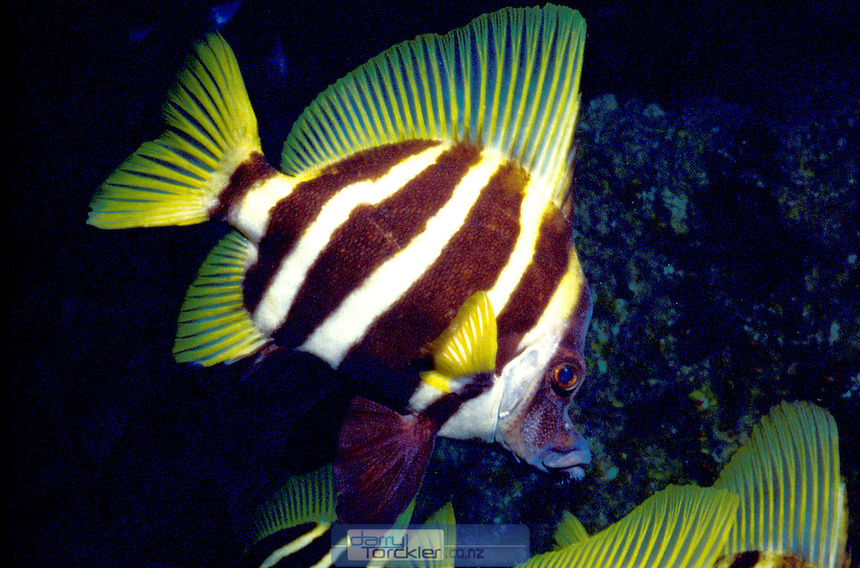
Evistias acutirostris
FAMILY
Pentacerotidae
TAXONOMY
Evistias acutirostris Temminck and Schlegel, 1844, Nagasaki,
Japan.
OTHER COMMON NAMES
English: Whiskered armorhead; Japanese: Tenguidai.
PHYSICAL CHARACTERISTICS
Body deep with a sail-like dorsal fin; the lower jaw has many
small barbels. Color pattern denoted by a dark brown face and
alternating dark brown and white vertical bands along the
body; all fins are yellow except for the pelvic fins, which are
dark brown. To 25.6 in (65 cm) total length.
DISTRIBUTION
Antitropical
DISTRIBUTION
, with populations in central and
southern Japan, including the Izu and Ogasawara Islands, and
Hawaii in the Northern Hemisphere and Lord Howe Island
(Australia), and the islands of northern New Zealand in the
Southern Hemisphere.
HABITAT
Generally a deep-slope fish, from 65 to almost 1,000 ft (20 to
almost 330 m) deep, depending upon locality. Found among
rocky and coral reefs, usually in or near caves.
BEHAVIOR
May be found in pairs or small groups.
FEEDING ECOLOGY AND DIET
Uses its snout and barbels to probe the bottom for various invertebrates.
REPRODUCTIVE BIOLOGY
Gonochoristic. Presumed to spawn pelagically, but little is
known of its reproductive
BEHAVIOR
and ecology. Eggs and larvae
are pelagic.
CONSERVATION STATUS
Not listed by the IUCN. Might be vulnerable because of its
status as a commercial food fish.
SIGNIFICANCE TO HUMANS
Esteemed as a food fish, but juveniles and young adults are also
taken, although infrequently, for the aquarium trade.
Other popular Animals
Photo Gallery of - Striped boarfish

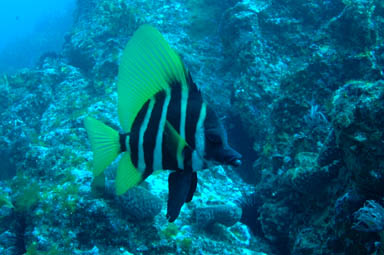
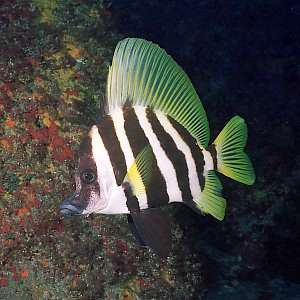
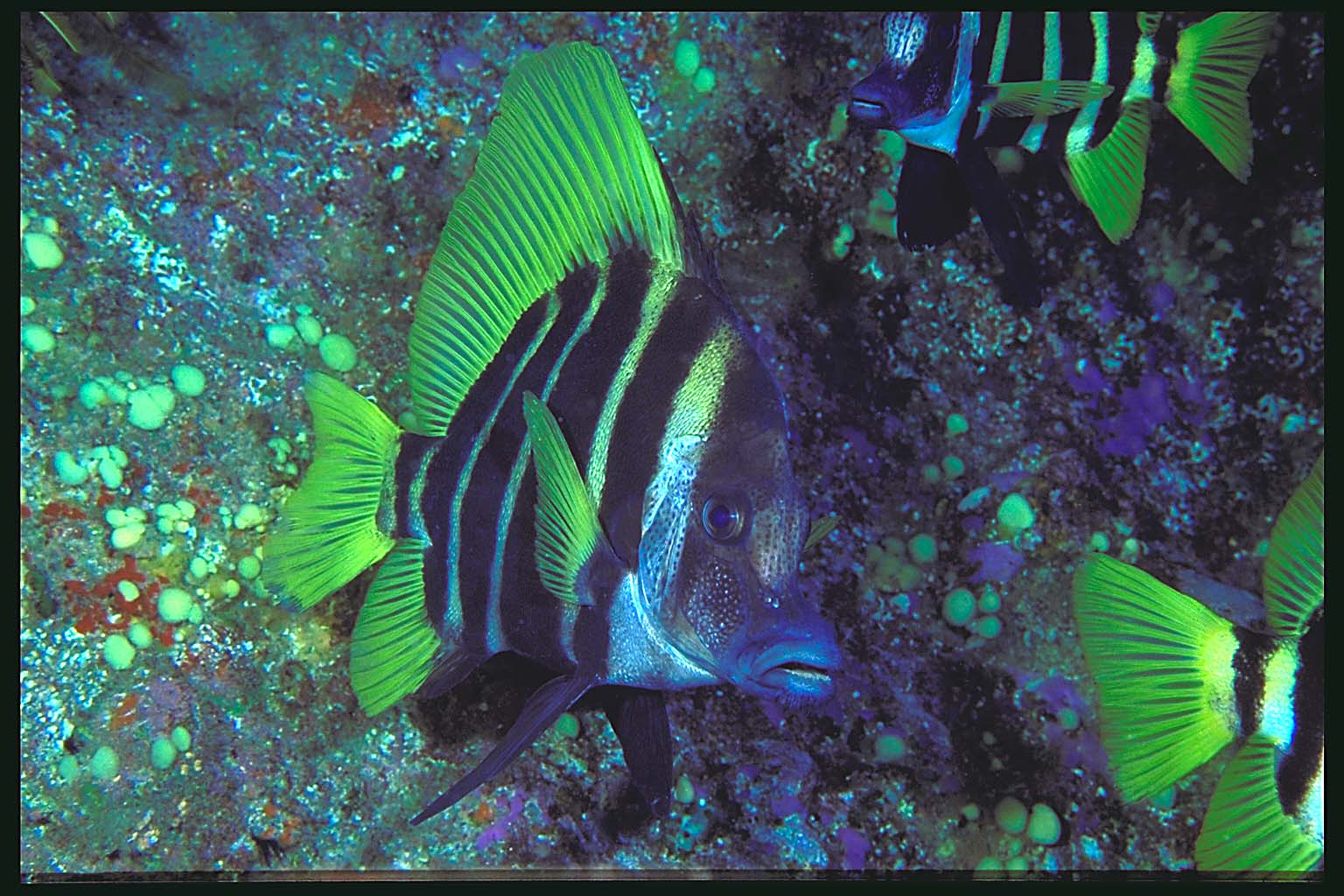
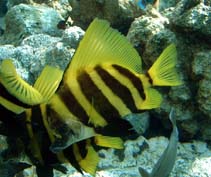
 Animalia Life
Animalia Life